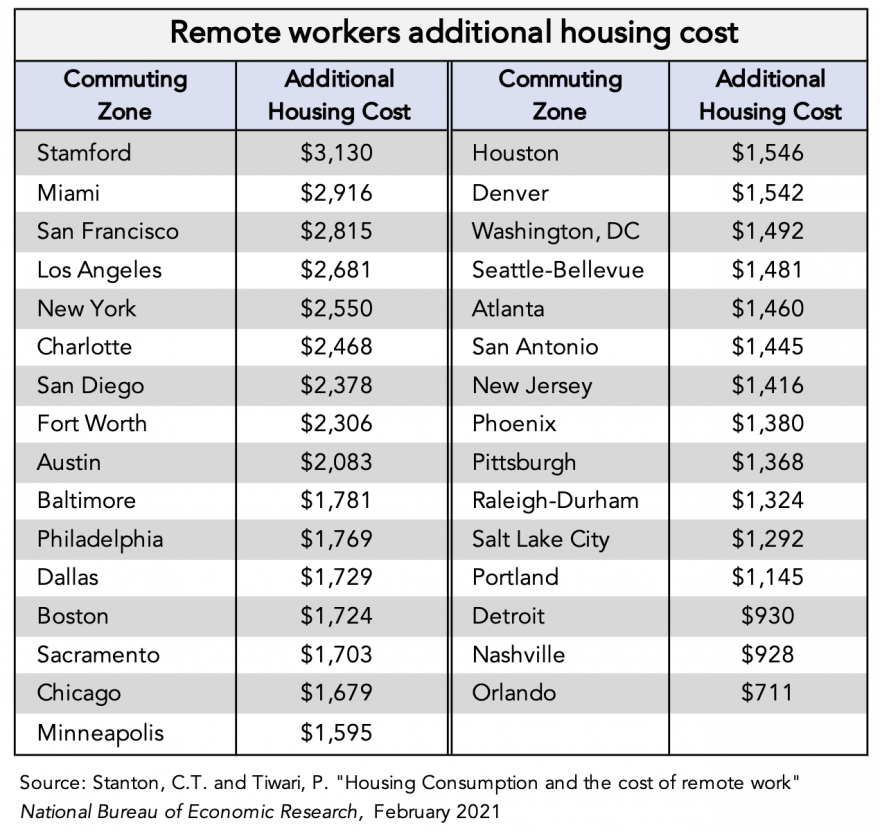
Vol. XXI, No. 3, March 2021
More on the potential post-pandemic impact of working from home
Last month's issue included an article on the potential impact of increased working from home on out-of-home entertainment and arts. It was focused on the commuting time teleworkers would save. We now have a just-published research paper by the National Bureau of Economic Research on the increased housing cost for remote workers.
The research found that remote workers consume more housing and higher quality housing (probably since they skew higher socioeconomic). They live in homes with an average of an additional 150 square feet of space to accommodate remote work.
This chart shows the additional housing cost that remote workers have for different metropolitan area commuting zones.

The additional housing cost might impact available discretionary spending by remote workers for out-of-home entertainment. However, many companies may compensate their workers for the extra cost. The research found that workers' additional housing costs were less in every metro than the employers' cost of maintaining an office for them.
Additionally, remote workers save on the cost of commuting. The average worker drives 16 miles to work each way. That's 160 miles a week or 7,680 miles a year based on working 48 weeks. AAA estimates to drive 20,000+ miles a year cost 55 cents per mile. That results in a driving commuting savings of $4,224 a year for full-time teleworkers, less than the additional housing costs in any of the cities listed above. This savings more than offsets any additional housing costs.


